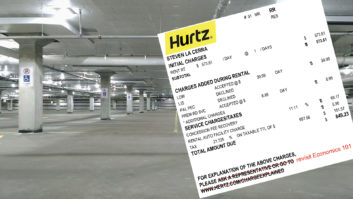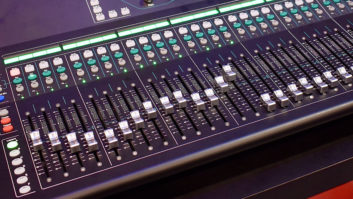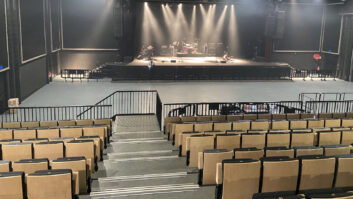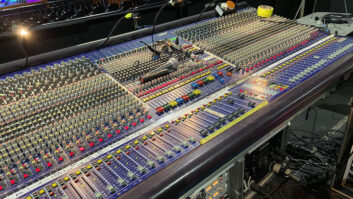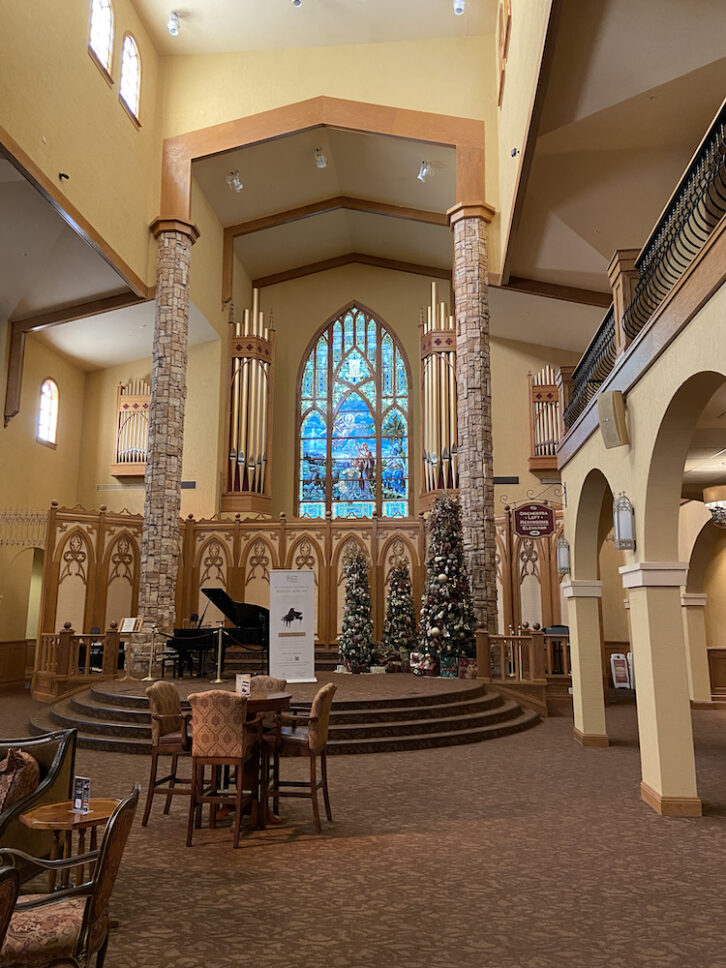
Formerly known as the Church on The Square, the Sharon L. Morse Performing Arts Center in The Villages, central Florida, opened in October 2020 after the completion of a massive expansion project that transformed the facility into a first-class performing arts venue. The capacity of the multi-level theater is 1,022, and the venue hosts a wide variety of entertainment, including concerts, comedy, dance, musicals and opera.
When my crew and I arrived backstage at The Sharon for a show, the promoter told me to check out the lobby once we were settled in. Literally built around what used to be the Church on The Square, the lobby is indeed beautiful. It maintains the feel of a house of worship, with three huge, fresco-style murals, 14 original restored stained-glass windows, and massive organ pipes (though the organ has been removed).
Interestingly, some of the faces of the apostles in the murals resemble famous musicians, a characteristic that was intentional. As part of the renovation, the lobby now also includes a grand staircase and balcony.
The theater has some interesting construction features, one of which is an orchestra pit built upon an elevator platform. When raised to the floor level of the auditorium, it facilitates the addition of 26 premium seats, and at its highest position, it can be used to extend the front of the stage.
Another interesting feature is that the theater does not employ a traditional manual fly rail with weights and ropes. Instead, it uses a fully electronic, motorized fly system that can be operated by a single person via a touchscreen located stage-left. Designed by ETC (Middleton, Wis.), the system can log information such as distance traveled, time of operation, and amount of weight that has been carried, ensuring that maintenance is up-to-date. At the time the theater opened, it was the only fly system of its type in the world.
As one would hope, the room was designed for high-quality acoustics. Self-supported structural walls weighing between 180 and 188 thousand pounds each were built upon rubber pucks to isolate the interior from exterior noise, and box-in-a-box construction ensures little-to-no leakage, even from areas inside the building such as the loading dock.
The Sharon contains an in-house P.A. designed and installed by BCI Integrated Solutions (Tampa, Fla.), with a chain-driven line array fed via Dante from a Yamaha CL5 and configured as a left/center/right system. A number of matrix outputs are used to generate feeds for the flown subs that are part of the line array, as well as feeds for the downstage fills, lobby, backstage and an assistive listening system.
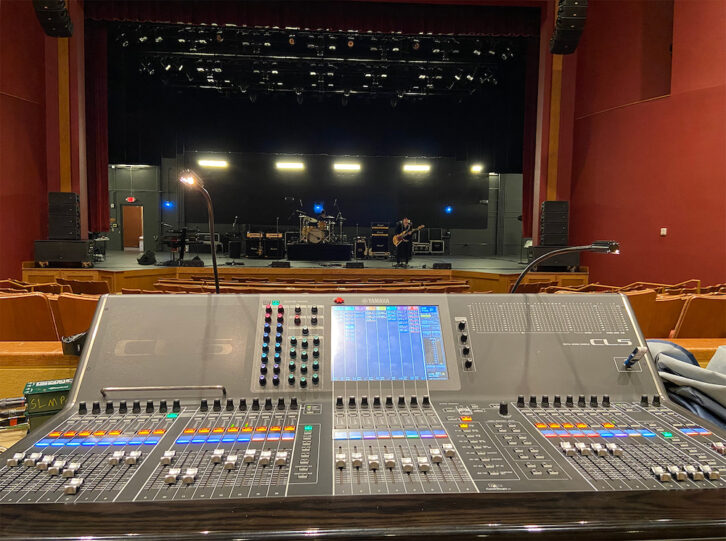
This in-house system is augmented for concerts with a ground-stacked P.A. that increases coverage for seats on the first level. I found mixing with this configuration to be a bit tricky at first—not because of the room, but because we needed to create extra outputs to feed the L/R ground stacks and the ground subwoofers.
Driving the ground system L/R from a matrix makes the most sense because it allows you to balance sound levels between the flown system and the ground system. Once you have that locked in, any changes made to the L/R bus will apply to the entire room. A good starting point is listening only to the flown P.A. and slowly raising the level of the ground system until you just start to hear it at the mix position.
Mix Live Blog: New Year’s Eve Live…Or Is It?
We used separate aux sends to drive the flown subs and ground subs—reducing the possibility of pummeling the balconies with low end in an effort to hear the low end on the floor—and fed the center hang from the CL5’s mono bus to preserve the L/C/R.
When facing the stage from front-of-house, the overall shape resembles a flared horn. Auditorium walls are treated to minimize reflections, and the system has plenty of headroom, so once you’ve dialed in these details, mixing is straightforward, with little in the way of surprises when you walk the room.
And don’t forget: If your tour makes a stop at The Sharon, be sure to check out that lobby!

